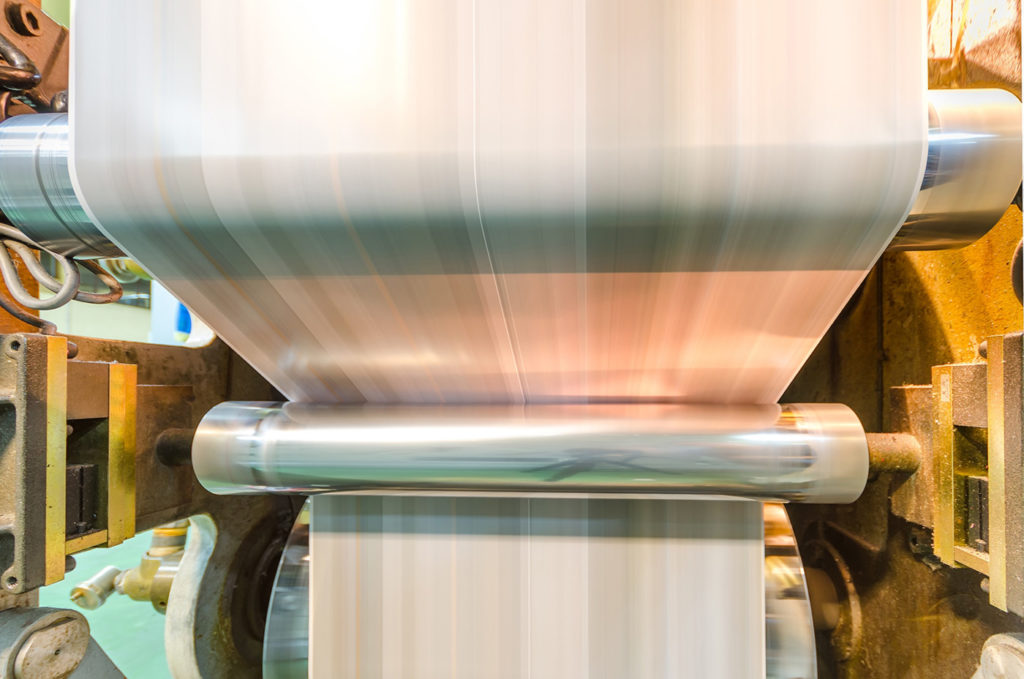
Navigating change like a Savvy Traveler
As conditions in the printing industry continue to evolve rapidly, here are four tips for moving forward successfully.
You are at the gate, your plane is on the tarmac, and you are anticipating an on-time departure and arrival. You board and settle in with your USA Today as usual, oblivious to the passing time and increasing chatter around you. And then it comes—a collective sigh as the captain announces that this plane is going nowhere. You will not be taking off, and you will not be reaching your destination as planned. A wintry mix has intervened, and while the more savvy travelers around you are already on their phones confidently securing alternative arrangements, you are sitting there stunned—silently cursing the latest winter storm.
Sitting on a jet that is going nowhere is not a feasible action plan, yet many commercial printers that have been stunned by ever-changing industry market conditions are still doing just that—instead of adapting and moving forward decisively. Perhaps these printers can take a few tips from savvy travelers when it comes to successfully navigating rapidly changing conditions, that is, the quickly evolving commercial print industry.
“It’s not a matter of offering everyone super customer service … instead, focus on your top-value customers to drive profit.”
~ Peter Fader, Wharton marketing professor and co-director of The Wharton Customer Analytics Initiative at the University of Pennsylvania
Objectively assess your situation
Start by segregating your customers into two groups: 1) Customers that you’d like to have more of, and 2) Other. In his book, Customer Concentricity: Focus on the Right Customer, Peter Fader, Wharton marketing professor and co-director of The Wharton Customer Analytics Initiative at the University of Pennsylvania, endorses a fundamentally different (from the conventional wisdom) business model. “It’s not a matter of offering everyone super customer service,” he writes. “You have to be able to recognize the differences among your customers and treat them differently. Most of your customers end up not being very profitable, so building a business around them doesn’t make much sense. Instead, focus on your top-value customers to drive profit.”
Fader emphasizes that companies should not focus on retaining all their customers. “Data consistently indicate that most customers are actually not that valuable, so why devote resources to keeping all of them?” This means jettisoning some of your customers who no longer fit with your new, more profitable approach to business.
Focus on your final destination
Increasing volume should not be your primary objective because volume doesn’t necessarily lead to greater profit in this industry. “The secret of lowering costs and increasing profits is not, as many printers believe, to get bigger in terms of sales volumes. Volume in and of itself does not lower overall costs because printing is mostly a job-shop model and not a continuous process model. This means that there are no significant economies of scale in printing,” explains Jim Cunningham, president of PIANKO (Printing Industries of Ohio•Northern Kentucky). Instead, he suggests that businesses reduce costs through investment in productivity-enhancing equipment and training and education of employees.
Being the low-price leader is not a sustainable business objective either. You need a value proposition that elevates your products and services to more than a commodity. As pricing evangelist and thought leader Stephan Liozu points out, price wars are bad for companies and for industries as a whole. Instead of lowering prices, Liozu, who has a doctorate degree in management, advises his clients to know their best customers well, to segment these customers, and to find pockets of needs that their company can meet through innovation to justify pricing. “Take a day, sit down with key personnel, and have a candid and mindful discussion about your value proposition. Identify what you can provide your best customers that will differentiate you and give you pricing power,” he says.
A solid value proposition—one based on your ability to solve your customers’ problems better than your competitors can—is like a compass pointing the way as you navigate the rapidly changing conditions in the print industry.
Explore all your options for getting there
Evaluate your current printing technology and determine if it’s time to upgrade. Charlene Sims, president of The Master’s Press, a Dallas printing company, explains that this has been key to their survival and long-term (40+ years) success. “We kept up with the current technology and invested in equipment that would keep us competitive and enable us to offer our best customers the options and quality they need. Our state-of-the-art equipment allows us to provide our clients with high-quality products on time and on budget,” Sims, the 2014 AMSP/NAPL/NAQP Printer of the Year, explains.
You may also want to consider new hires with expertise in growing markets or strategic partnerships with companies that will enable you to offer your key customers ancillary services such as marketing and communications solutions.
Stay connected
Savvy travelers get timely updates on their smartphones as conditions change. If you want to know more about changing conditions and new opportunities in your industry, stay connected. Cunningham points out that members of an association such as PIANKO and PIA (Printing Industries of America) show a significant advantage in sales volumes and profit margins over non-PIA printing companies. “There are numerous reasons why this is true: obviously the availability of programming, education, and networking opportunities, etc. But I also think even more important is that companies who join associations are much more open and interested in staying up to date in all aspects of the industry—marketing, technology, economics—and most of all not afraid to learn from others’ success,” he explains.
By Lorrie Bryan